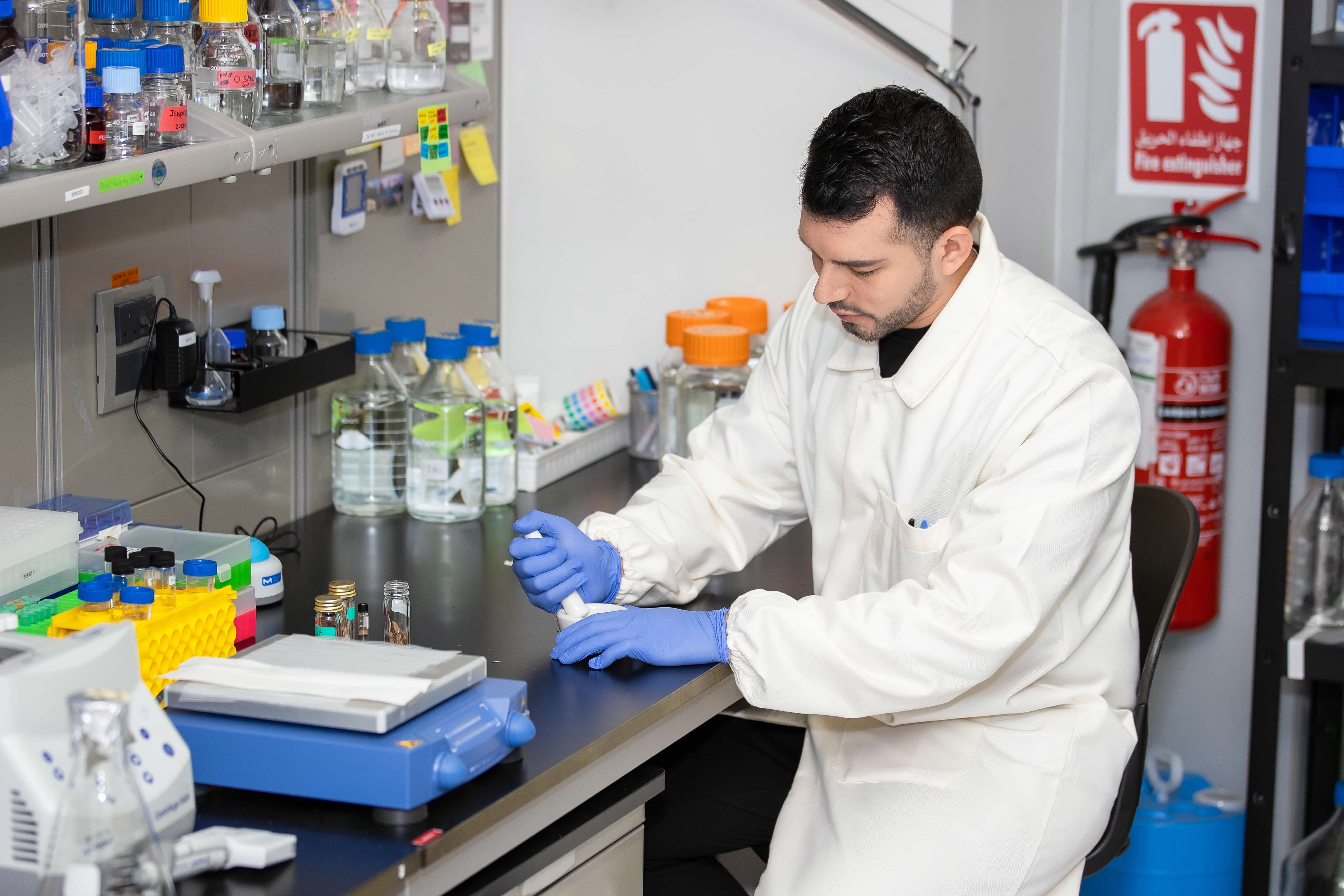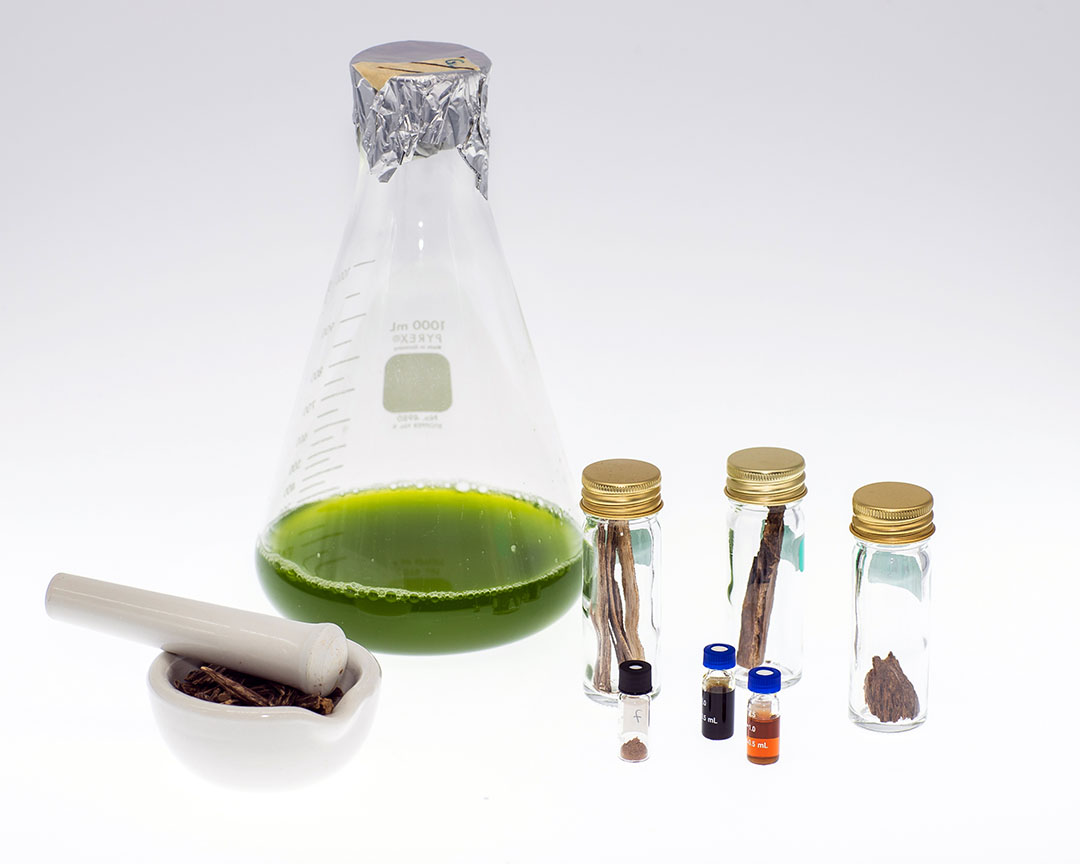Greening the scent of Arabia

Kyle Lauersen (4thfrom right), Gyorgy Szekely (3rd from right) and the team that developed a green synthetic solution to replicate some of the complex fragrances of agarwood using engineered algae.
Sometimes called the scent of Arabia, resinous agarwood is one of the most expensive raw fragrance ingredients in the world. Known in the Middle East as oudh perfumes and bakhour incense, both products are made with the fragrant, resinous wood of trees in the Thymelaeaceae family. This wood is burned for incense and its precious resin used to create perfumes. The trees are mainly found in the forests of Southeast Asia, India and Bangladesh but demand for agarwood has rapidly outpaced the supply of slow-growing natural sources, and many species are now considered endangered.
The compounds responsible for the complex fragrances of agarwoods are known as sesquiterpenes (STPs) and are difficult to create chemically.
Now, a green synthetic solution to partially recreate agarwood- functionalized terpenes using engineered algae has been devised by KAUST Ph.D. student Sergio Gutiérrez and researchers from the Sustainable & Synthetic Biotechnology Group led by Kyle Lauersen, with support from KAUST’s Core Labs and Gyorgy Szekely’s group.

Sergio Gutiérrez, a Ph.D. student in Kyle Lauersen’s group, contributed to the study that allowed to source fragrant terpene mixtures through synthetic routes.
Inspired by visits to the old markets in Al Balad, Jeddah, the researchers first catalogued the chemical diversity of STPs in 58 agarwood (bakhour and oudh) samples by two-dimensional gas chromatography–mass spectrometry. They found that hundreds of STPs are shared across different agarwood samples, but each sample is unique, with a distinct chemical profile.
Lauersen’s team then set out to reproduce some of the chemical complexity of agarwood STPs in algae using synthetic biology and a robotics-assisted workflow, which allowed them to produce and screen large numbers of the compounds made from the algae.
Several bioengineers – including Lauersen – have previously shown that engineered algae can be used to produce natural chemicals, such as the STP patchoulol (patchouli fragrance) and other scent molecules. In this study, they used the green alga Chlamydomonas reinhardtii to produce nine distinct STP chemical products widely found in agarwood. They then harvested the molecules from the growing algae using a biocompatible solvent, a process known as “microbial milking.”
Next, the green chemists in the Szekely group were able to generate more than 100 STPs through a sustainable reaction process using the algal-produced terpenes.
“This total bioprocess represents a sustainable way to source fragrant terpene mixtures compared to the harvest of endangered trees,” says Gutiérrez.
“Coupling this green-chemistry step with a photosynthetic cell host and chemical milking strategy involving complete solvent recycling allows this to be classified as a complete green bioprocess for synthesizing fragrant STPs,” he says.

The scarcity of agarwood, a valuable fragrance ingredient derived from the resinous heartwood of certain trees, encouraged researchers to develop a green synthetic route using engineered algae to replicate some of the complex fragrances of agarwood.
The algae already consume on CO2 so the process also provides a way to convert waste carbon to something of value. To make the process even more sustainable, the algal host could be grown in wastewater.
“Their ability to thrive on the nutrients found in wastewater and CO2 as the sole carbon source means that using algae as a bioengineering platform can facilitate lost resources in waste streams to be converted into valuable products,” says Lauersen, who has previously shown that algae can be grown in wastewater to yield the perfume patchoulol and other valuable compounds.
He believes there is wide scope for other combinations of microbial- engineered terpene production and synthetic chemistry to produce fragrant mixtures.
“This work shows the potential of combining synthetic biology, sustainable bioprocess design and green chemistry to provide a complementary source of terpene chemicals,” he says. “This could alleviate some of the pressure on agarwood supplies in the wild, and also be used for other applications, such as production of medicines.”
“Our process needs to be validated in scaled cultivation. Innovations in bioreactor design could enable the transition to green bioprocesses.”

